Morphologic, geographic and genetic variation among Lake Superior ciscoes
Contributing Authors
Owen Gorman (USGS, otgorman@usgs.gov), Yu-Chun Kao (USFWS), Amanda Ackiss (USGS), Randy Eshenroder (GLFC), Thomas Pratt (DFO), Joshua Lyons (USGS), Renee Renauer-Bova (USGS), Ann Ropp (USGS)
Executive Summary
The Laurentian Great Lakes once contained a diverse endemic cisco complex, but a series of factors resulted in declines in diversity and now Lake Superior is the only Great Lake with a relatively intact cisco complex. Although the large, pelagic cisco, Coregonus artedi, are relatively easy to distinguish as adults, the remaining forms, the deepwater ciscoes, are not, which has hampered their detection and assessment of their status. A recent review of the Lake Superior cisco complex by Eshenroder et al. (2016) identified three common forms: the pelagic Cisco (C. artedi), and two deepwater forms, Bloater (C. hoyi) and Kiyi (C. kiyi). Three rare forms, Shortjaw Cisco (C. zenithicus), Lake Superior Blackfin Cisco (C. nigripinnis cyanopterus) and Lake Superior Shortnose Cisco (C. reighardi dymondi), were identified by Koelz (1929) in the 1920s. Of these rare forms, the Shortjaw Cisco was relatively abundant through the mid-20th century but subsequently became uncommon (Gorman and Todd 2007). The goal of our research was to conduct a comprehensive description of the morphological and genetic diversity of forms in the Lake Superior cisco complex and to provide keys to facilitate identification of forms in field and laboratory settings. Our goal was addressed by conducting a comprehensive morphological description of all known cisco forms by life stage and geographic region in combination with genetic assessments to determine whether these forms are morphologically and genetically distinct. The objectives of our proposed research were to (1) determine informative morphological characters that distinguish common, rare, and undescribed forms, (2) describe ontogeny of morphological characters for common forms, (3), describe geographical variation for common forms, (4) characterize genetic uniqueness and relationships among common, rare, and undescribed forms, (5) develop a taxonomic classification that reflects the diversity of common and rare forms and is congruent with genetic characterization; and (6) construct a comprehensive database of cisco morphometrics and genetics to facilitate future research and restoration efforts. The execution of this ambitious project faced considerable challenges, for example, despite these challenges, the bulk of the critical work needed to successfully address the project objectives has been completed.
Outcomes
2781 ciscoes have been morphologically characterized by direct measurement
2017 ciscoes have been morphologically characterized by measurement from digital images
934 ciscoes have been morphologically characterized and identified with the Cisco Score Card methodology
1454 of 1526 ciscoes were genotyped
744 fish have been aged from otoliths
Gillrakers from 3232 fish have been mounted, photographed, and assessed morphologically
A relational database housing all morphological, biological, and genetic data is ~80% complete
